Updated: February 28, 2020
How important is it for you to harden off seedlings before transplanting them in the ground? It’s important. No question about it.
Why? Too much sun, wind or temperature change can set your plants back weeks. They may never recover.
Table of Contents
Let’s take a sec to get the legal words out of the way. This article may contain affiliate links. That means if you click and buy from my partners, I will make a tiny amount of money at no cost to you. This in no way affects my recommendations.
What is hardening off?
So what exactly is hardening off, and why is it so important?
Hardening off is the process of gradually getting your plants ready for a more difficult outdoor environment. Wind, cold or hot temperatures and sun scalding are all potential threats that can shock or even kill your baby seedlings.
At the beginning, all they’ve known is the cushy life under the indoor grow lights or the hoop house. Hardening off is kind of a boot camp to prepare them for the war of natural selection that is waiting for them outside your home.
The key point to hardening off is that you gradually build up the amount of time seedlings are outdoors. This will be less “tiring” on your baby plants.
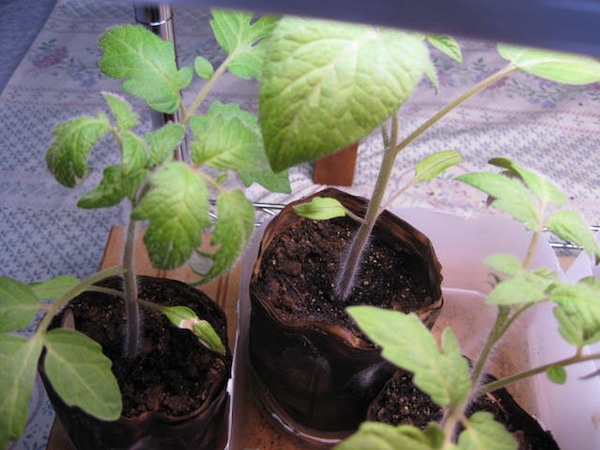
Two biggest dangers of hardening off
The two biggest dangers when hardening off seedlings are cold and wind. You can mitigate both risks by stopping the hardening off process and bringing plants inside when the weather is bad.
Related: I Tested the Top 4 Seed Starting Mix Products. This is What I Learned
If you have a lot of seedlings, moving plants in and out can become a full time job. It’s good to know when your plants are actually in danger so that you only move them when needed. Here’s a handy temperature chart that lets you know when it’s too cold to leave them out:
Minimum “Stay Alive” Temperatures
All temperatures are In Fahrenheit.
It’s best to stay well above these temps.
| Minimum Temp | Vegetable | |
|---|---|---|
| 40 degrees | broccoli, brussels sprouts, kohlrabi, cabbage, onions, leeks, parsley | |
| 45 degrees | celery, Chinese cabbage, lettuce, endive | |
| 50 degrees | squash, pumpkin, sweet corn | |
| 55 degrees | cucumber, muskmelon | |
| 60 degrees | basil, tomatoes, peppers |
Can plants get sunburned?
Many people think that wind and cold temperatures are the only reasons for hardening off. Not true. It turns out that the sun itself is another critical threat.
Sun can dehydrate plants in a way that is similar to sunburn in humans. Cutin, which is a waxy substance that protects plant leaves from dehydration, is built up gradually with exposure to sun. It acts sort of like melanin in humans. Too much sun all at once and your seedlings could go into shock from dehydration because they don’t have enough cutin.
Can you take shortcuts with this process? Probably.
— Suburban Hobby Farmer
Often, this will set your plants back a couple of weeks while they recover. At worst, they may never recover.
Five-step hardening off method
How to harden off seedlings. Use this method for the best possible results.
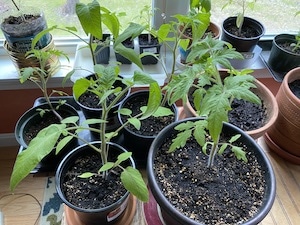
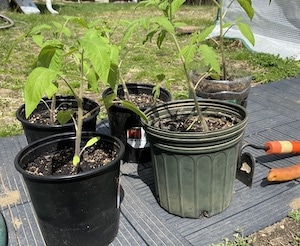
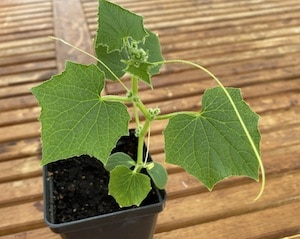
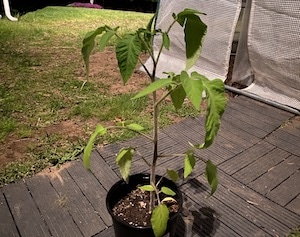
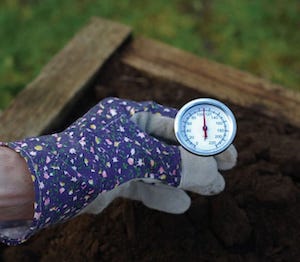
Greenhouses, hoop houses and cold frames
Protected culture techniques like greenhouses, hoop houses and cold frames add another wrinkle to the hardening off story.
Moving seedlings from indoors to hoop house
I’ve had a lot of experience moving seedlings from inside, where it’s a constant 68 degrees F, to a hoop house where the temperature often changes dramatically from one minute to the next.
In late winter when it is cloudy, the hoop house is often very cold. But when it’s sunny, it can be very warm. I’ve noticed that plants that are moved from inside to a cold frame or hoop house need to adapt to the climate slowly.
Fortunately, the hoop house plastic covering seems to reduce the impact of sunlight. Even if your plants received some sun through an indoor window as they were growing, hoop houses still present sunburn challenges for your seedlings. Also, the wild temperature changes can give seedlings trouble.
Related: A Hoop House is a Tomato Growing Machine
But it’s not as tough on the plants as moving straight from under the grow lights to the garden soil. You don’t have to be as gradual in their exposure when you use a hoop house.
Transplanting seedlings from hoop house to garden
What about moving plants from the hoop house to the garden? You need to get plants ready to exit the hoop house well before it’s time to transplant. Depending on the outdoor temperatures, you should try to gradually get seedlings used to the outside by opening the hoop house windows more and more each day. This will help them get used to the outdoor temperatures.
Related: Grow a Million Cucumbers in a Hoop House
On the other hand, sunlight isn’t as much of a problem. The sun is already pretty strong in a nursery greenhouse, cold frame or hoop house. Your seedlings won’t need gradual exposure to sunlight when they are already in the half way house.
The bottom line
Can you take shortcuts with this process? Probably. You could probably double the time your seedlings spend outdoors each day instead of adding an hour. Just make sure the weather conditions are right.
The bottom line is when you are putting plants outside, even when they are coming from a cold frame or hoop house, you should gradually get them used to the outdoors. The more time you take to get them used to it, the better your chances of success.
Related posts:
- Transplanting Seedlings Outdoors
- Better Tomatoes with Walls O Water
- I Shopped for Hoop House Kits. A Review of the Three I Considered
Suburban Hobby Farmer is a participant in the Amazon Services LLC Associates Program, an affiliate advertising program designed to provide a means for sites to earn advertising fees by advertising and linking to amazon.com.